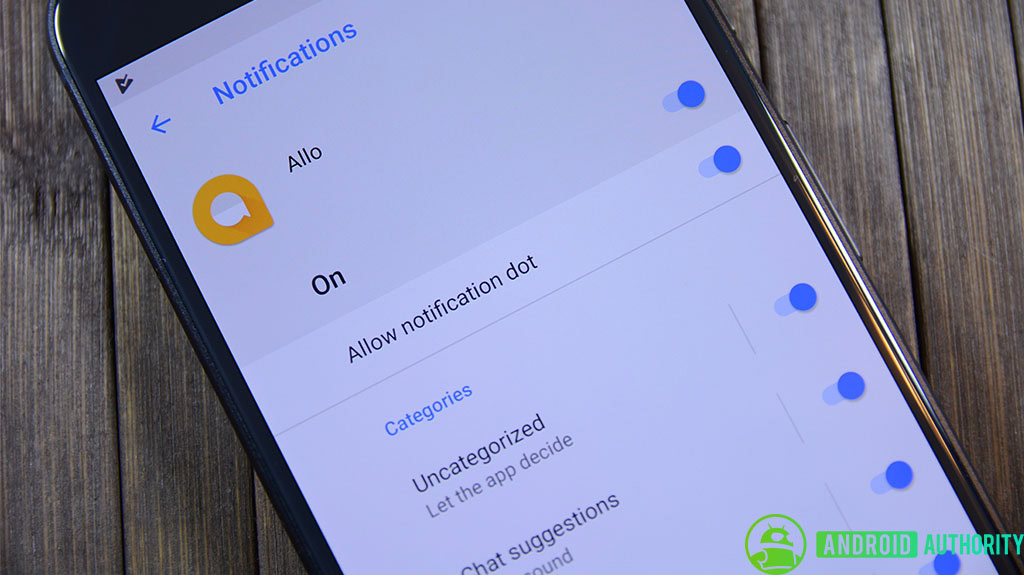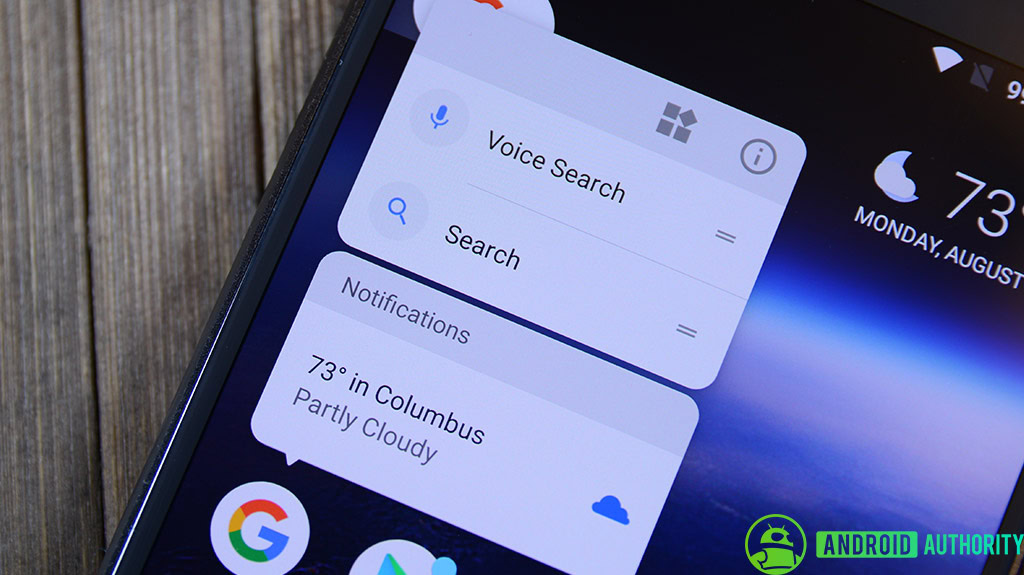Affiliate links on Android Authority may earn us a commission. Learn more.
How Oreo is better than Nougat: Notifications
Published onAugust 23, 2017

Notifications have received three major changes with Android 8.0 Oreo compared to Android 7.x Nougat. First, the handling in the notification shade has been improved, with extra actions now available. Second, there are notification dots. Thirdly, Android O adds notification channels, a unified system to help users manage notifications.
The notification shade has received a number of improvements, some visual, some practical. On the visual side the media controls have been given a color tweak. Previously the media controls in the notification shade displayed the album cover image, very nice. But now with Android 8.0 the background of the media control changes color according to the album artwork. The color also fades into the actual album artwork in the media controls.
Also in Android Oreo, when you partly swipe a notification to the side, you will be provided with options to snooze it for 15 minutes, 30 minutes, an hour, or two hours; tap any one of these to snooze that notification for the specified time. The partial swipe will also give you access to the notification settings for that app where you can disable the notifications as well as configure other behaviors like enabling the notification dot.

Notification dot? What is that? The notification dots appear on an app’s icon in the launcher (both on the home screen and in the app drawer) to let you know that you have an unread notification for that app. Long pressing on the app icon will show you the notification. The long press also reveals several app shortcuts specific to that app.
However, the biggest notification related change comes in the form of notification channels. Notifications are great, but if you are like me then after a few hours of not looking at my phone, I have too many notifications pending. To help combat this and to help users manage notifications more efficiently, Android 8.0 Oreo introduces notification channels for a more unified approach.
Apps written for Android 8 or later must implement one or more notification channels to display notifications to your users. Apps written for Android 7.x or lower will continue to behave the same as they do now, even on a device running Android Oreo.
The idea is that developers create a notification channel for each distinct type of notification that an app can send. For example, a messaging app could setup separate notification channels for each conversation group created by the user.
When a user modifies the behavior for any of the following characteristics, it applies to the whole notification channel, so all notifications posted to that channel behave the same:
- Importance
- Sound
- Lights
- Vibration
- Show on lock screen
- Override do not disturb
Wrap-up
Notifications are one of the key ways we interact with apps on our smartphones and any changes that streamline or improve that interaction are very welcome. Notification channels are a great idea, but it will be a while before we see both apps which support them and enough devices running Android 8.0 to make them mainstream.
What do you think about the notification changes in Android 8.0 Oreo? Are you looking forward to mainstream support for notification channels? Please let me know in the comments below.
Don’t forget to check out our other articles in this series: